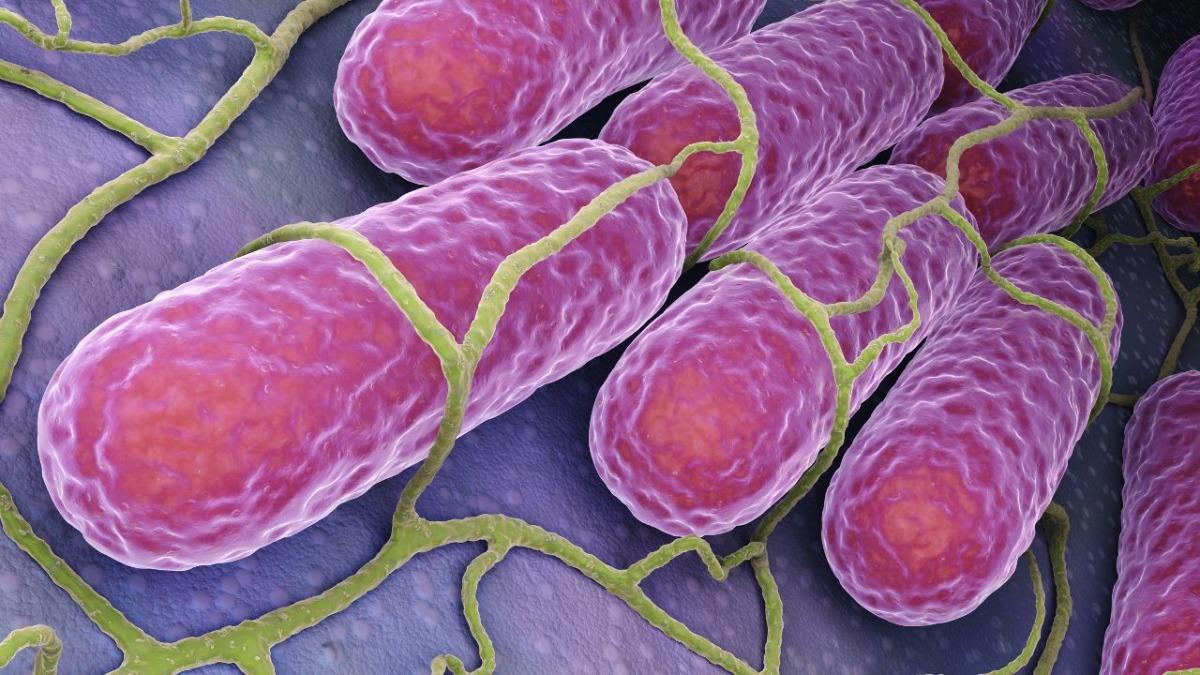
When it comes to foodborne illnesses, salmonella is one of the most common culprits affecting children. This sneaky bacterium can be found in various foods, making it a significant threat to your child's health. You might be surprised to learn that some of the foods your child loves most could be potential carriers of this harmful pathogen. But don't worry; with the right knowledge and precautions, you can minimize the risk and keep your family safe from salmonella.
In this article, we'll explore the top 5 foods that can cause salmonella in kids. We'll delve into how these foods become contaminated and what you can do to prevent it. Whether it's something as simple as a picnic lunch or a favorite dinner recipe, understanding the risks associated with certain foods is the first step towards safeguarding your child's health.
Are you ready to uncover the hidden dangers in your kitchen? Stay tuned as we guide you through this essential information. With the expertise of Kidsville Pediatrics McKinney on your side, you'll gain valuable insights and practical tips to protect your child from salmonella poisoning.
Salmonella: A Brief History and Statistics

Throughout history, typhoid fever, caused by Salmonella enterica serovar Typhi, has triggered many dire outbreaks. Over time, the link between this disease and contaminated food or beverages became clear.
Karl Joseph Eberth, a physician and student of Rudolf Virchow, discovered the bacillus in the abdominal lymph nodes and spleen in 1879. His observations, published in 1880 and 1881, were later confirmed by German and English bacteriologists, including Robert Koch. The genus "Salmonella" was named after Daniel Elmer Salmon, a veterinary pathologist who led the United States Department of Agriculture (USDA) microorganism research program in the 1800s. Together with Theobald Smith, Salmon identified Salmonella in hogs affected by hog cholera.
A notable historical figure associated with Salmonella is Mary Mallon, also known as "Typhoid Mary." Born in Ireland and immigrating to the United States in 1884, Mallon became the first famous carrier of typhoid fever in the U.S. Working as a cook, she caused several typhoid outbreaks, infecting at least 122 people, five of whom died. Despite being quarantined twice, Mallon continued to work as a cook, leading to further outbreaks. Her case highlights how the healthcare system can sometimes provoke prejudiced social attitudes toward disease carriers.
Salmonella outbreaks have been documented throughout history, including a significant plague in ancient Athens around 430 B.C. and a major epidemic in Jamestown, Virginia, in the early 1600s. Advances in vaccination and public sanitation have drastically reduced the incidence of typhoid fever in developed countries. However, outbreaks caused by other Salmonella serovars still occur.
One of the deadliest Salmonella outbreaks occurred in 1985, when approximately 6,149 cases of Salmonella Typhimurium were reported among people who had consumed 2% pasteurized milk sold in northern Illinois, with 5,770 laboratory-confirmed cases.
The Centers for Disease Control and Prevention (CDC) estimate that each year in the U.S., there are approximately 1.35 million cases of salmonellosis, resulting in 26,500 hospitalizations and 420 deaths. Most of these cases stem from contaminated food. While salmonellosis is the second leading cause of foodborne illnesses in the U.S. after norovirus, it is the leading cause of hospitalizations and deaths from food poisoning.
To report any case of salmonella in children, consult a pediatrician in McKinney.
Salmonella in People and Pets

Handling contaminated food can also lead to infection if the bacteria are transferred from hands to mouth. If salmonella gets on hands or clothing, it can spread to others, as well as to objects and surfaces.
Pet food can sometimes be a source of Salmonella infection. If contaminated pet food or utensils are handled and then someone touches their mouth, they may ingest the bacteria. Pet foods containing raw or undercooked meat are more likely to test positive for Salmonella than processed pet foods.
Many animals, including cattle, chickens, rodents, reptiles, and amphibians, can naturally carry Salmonella without showing signs of illness. People can get salmonellosis from handling these animals. Salmonella can also be present on the inside and outside of cages, aquariums, and terrariums. Feeder rodents given to some pet reptiles and amphibians can be a source of the bacteria. Direct contact with rodents or contaminated items can easily spread this germ.
Salmonellosis in People: A Guide from McKinney Pediatricians
Salmonella infection most often causes gastroenteritis, ranging from mild to severe. Symptoms usually appear 6 hours to 6 days after ingesting the bacteria and include:
Fever
Diarrhea (which may be bloody)
Nausea
Vomiting
Stomach pain
Many recover from salmonellosis in just 4 to 7 days even without treatment. In severe cases, the diarrhea can be so intense that hospitalization is required. If the bacteria spread from the intestines to the bloodstream, the infection can become life-threatening unless treated promptly with antibiotics.
Children under 5, pregnant women, the elderly, and people with weakened immune systems (such as those with cancer or other diseases) are at higher risk of severe salmonellosis.
Salmonellosis in Dogs and Cats
While uncommon, dogs and cats can be carriers of Salmonella, shedding the bacteria in their stool and saliva, and potentially spreading it to the home environment, people, and other pets. For instance, cats can spread Salmonella through shared litter boxes or by roaming on surfaces like kitchen countertops. Dogs may spread the bacteria through kisses or stool accidents inside the home. Pet waste from both sick and healthy animals can be a source of infection for humans.
In adult dogs or cats, the disease typically coincides with another infection or health problem. Puppies and kittens are more likely to show signs of salmonellosis, which include:
Vomiting
Diarrhea (which may be bloody)
Fever
Loss of appetite
Decreased activity level
By staying informed and practicing good hygiene, you can help prevent the spread of Salmonella and protect your family and pets from infection.
Salmonella Food Sources
As promised, here are the 5 foods that have been known to contain salmonella or were recorded to have been recalled from grocery shelves because they caused salmonella-borne illnesses:
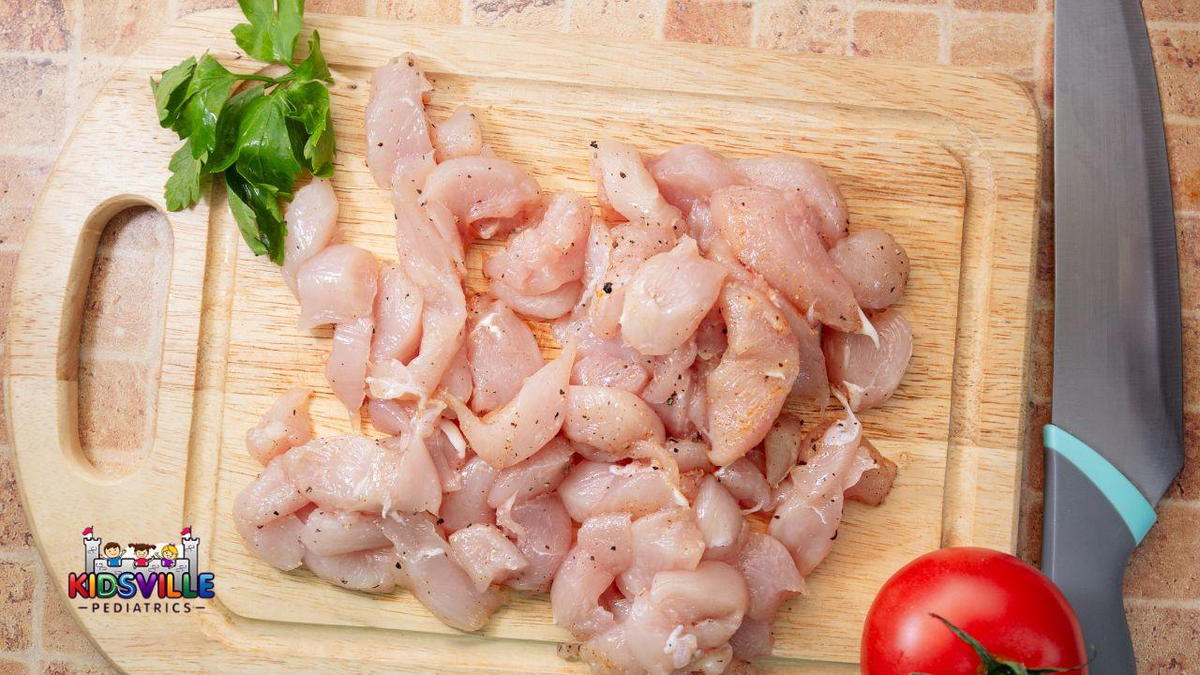
1. Raw Chicken and Backyard Poultry Meats
An increasing number of people across the country are choosing to keep poultry, such as chickens and ducks, as part of a greener, healthier lifestyle. While there are many benefits to having backyard chickens, it’s important to consider the risk of illnesses, especially in children, that can arise from handling live poultry or anything in the area where they are kept. Chickens, ducks, and other poultry often carry Salmonella and Campylobacter, bacteria that live naturally in their intestines and can be passed in their droppings. Even organically fed poultry can become infected with these bacteria. While the birds rarely get sick, these organisms can cause serious illness when transmitted to people.
How Do People Get Sick from Live Poultry?
Live poultry can carry Salmonella in their droppings and bodies even when they seemingly look clean. These germs can easily spread to cages, bedding, plants, coops, and soil as well as on the hands, shoes, and clothing of those who work around them. People can become infected when they put their hands or other items that have been in contact with the birds or their environment into their mouths. Young children are especially at risk because they are more likely to put their fingers or other items into their mouths and their immune systems are still developing.
To prevent illness, it’s crucial to wash your hands immediately after touching poultry or anything in their living area. The germs on your hands can easily spread to other people or surfaces.
Tips for Handling Chicken Safely
If chicken is on your menu, follow these guidelines from Kidsville Pediatrics McKinney to help prevent food poisoning:
At the Store
Place chicken in a disposable bag before putting it in your shopping cart or at the bottom of the cart to keep raw juices from getting onto other foods.
In the Refrigerator
Store chicken on the bottom shelf in a sealed container or wrapped securely to prevent juices from leaking onto other foods.
Prepping Chicken
Wash hands with soap and water for no less than 20 seconds before and right after handling chicken.
Raw chicken does not need to be washed prior to cooking. According to a USDA study, 1 in 7 people who sanitized their sink after washing raw chicken still had sink germs.
If you choose to wash chicken, do so safely:
Run water gently over the chicken to reduce splashing.
Immediately clean and sanitize the sink and surrounding area with hot, soapy water.
Wash your hands for 20 seconds.
Use a separate cutting board for raw chicken. Never place cooked food or fresh produce on a surface that previously held raw chicken.
Wash cutting boards, utensils, dishes, and countertops with hot, soapy water after preparing chicken and before preparing the next item.
While Cooking
Use a food thermometer to ensure chicken is cooked to a safe internal temperature of 165°F.
When doing a microwaveable meal with frozen chicken, be sure to handle it as you would fresh raw chicken.
If the chicken you are served at a restaurant isn’t fully cooked, send it back for more cooking.
After Eating
Refrigerate or freeze leftover chicken within 2 hours, or within 1 hour if exposed to temperatures above 90°F, like in a hot car or at a picnic.
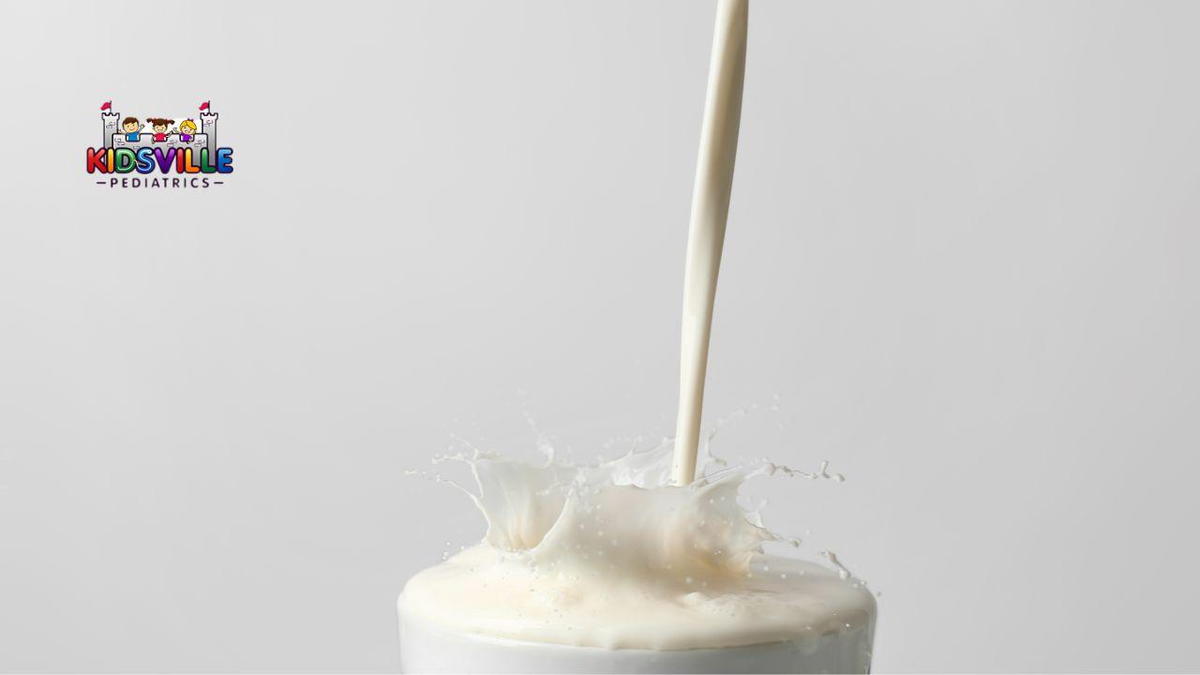
2. Unpasteurized Milk and Cheese
Milk and milk products offer numerous nutritional benefits, but it’s important to understand the potential risks associated with raw milk, also known as unpasteurized milk. Raw milk can harbor dangerous germs – including salmonella and E.Coli – that pose serious health risks to you and your family.
According to the CDC, from 1998 through 2018, there were 202 outbreaks associated with the consumption of raw milk. These outbreaks resulted in 2,645 illnesses and 228 hospitalizations. It’s important to note that most food-borne illnesses are not part of recognized outbreaks, so for every reported illness, many more occur.
What is Raw Milk?
Raw milk is milk from cows, sheep, goats, or any other animal that has not been pasteurized to kill harmful germs. Germs can pose significant health risks, particularly to individuals with weakened immune systems, including transplant patients and individuals with HIV/AIDS, cancer, and diabetes, as well as children, older adults, and pregnant women. The CDC has found that children and teenagers are especially affected by foodborne illnesses from raw milk.
Pasteurized Milk: A Safer Choice
Pasteurization is a process that kills germs through heating milk at a certain temperature. Developed by Louis Pasteur in 1864, this process eliminates harmful organisms responsible for diseases such as listeriosis, typhoid fever, tuberculosis, diphtheria, Q fever, and brucellosis.
Foodborne illness from raw milk can cause symptoms such as vomiting, diarrhea, abdominal pain, fever, headache, and body aches. While most healthy people recover within a short time, some can develop chronic, severe, or even life-threatening symptoms. If you or someone you know becomes ill after consuming raw milk or products made from it, or if you are pregnant and think you may have consumed contaminated raw milk or cheese, seek medical attention immediately.
Debunking Myths About Raw and Pasteurized Milk
Despite the benefits of pasteurization, some myths persist about milk:
Myth: Pasteurization causes lactose intolerance and allergic reactions. Fact: Both raw and pasteurized milk can cause allergic reactions in people sensitive to milk proteins.
Myth: Raw milk kills dangerous pathogens on its own. Fact: Raw milk does not kill dangerous pathogens.
Myth: Raw milk marketed for pets is safe for humans. Fact: Raw milk for pets is not safe for human consumption.
Myth: Pasteurization reduces milk’s nutritional value. Fact: Pasteurization does not reduce milk’s nutritional value.
Myth: Pasteurized milk can be left out of the refrigerator for extended periods. Fact: Pasteurized milk must still be refrigerated, especially after opening.
Fact: Pasteurization kills harmful germs and saves lives.
Choosing Safe Milk Products
To avoid getting sick from the germs often found in raw milk, choose pasteurized products. Safe options include:
Pasteurized milk or cream
Pasteurized hard cheeses (e.g., cheddar, Parmesan)
Pasteurized soft cheeses (e.g., Brie, Camembert)
Processed cheeses, cream cheese, cottage cheese, and ricotta made from pasteurized milk
Pudding, yogurt, ice cream, and frozen yogurt processed using pasteurized milk
High-risk choices include unpasteurized milk or cream, unpasteurized cheeses, and unpasteurized dairy desserts. When shopping for milk and dairy products, always check the label for the word “pasteurized.” If it’s not clear, ask your grocer or health food store clerk. Avoid purchasing dairy products from farmers' markets or roadside stands unless you can confirm they are pasteurized. Protect your family's health by making informed choices and opting for pasteurized milk and dairy products.
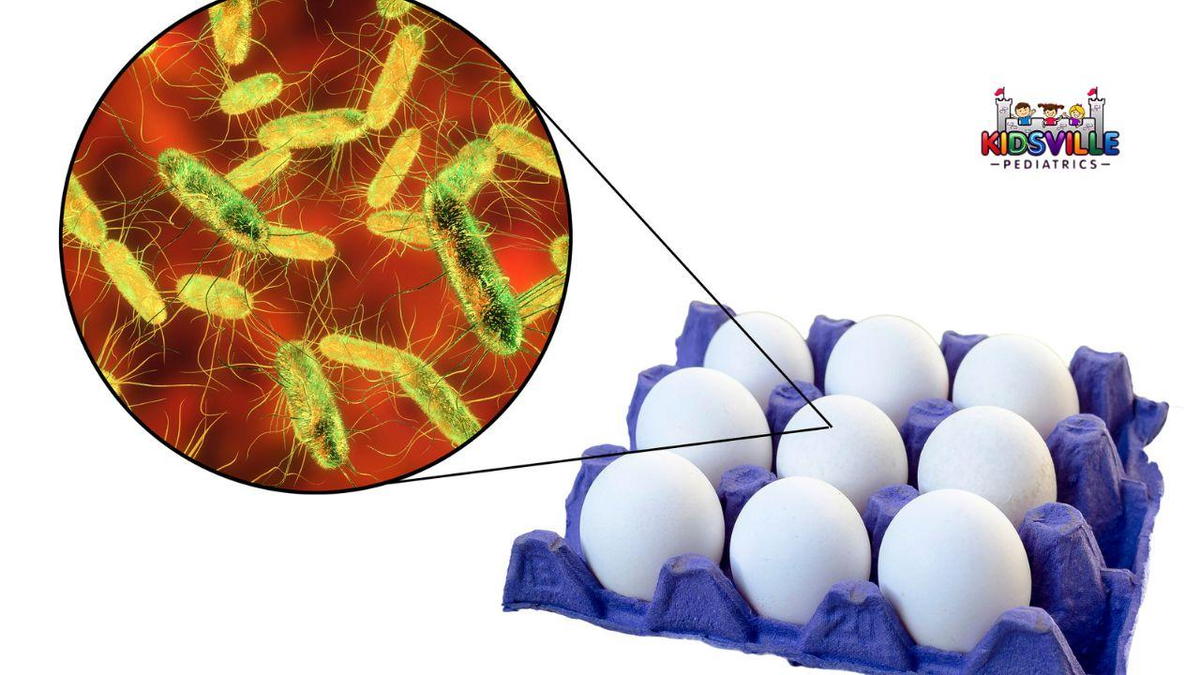
3. Raw or Uncooked Eggs
Fresh eggs, even those with clean, uncracked shells, can harbor Salmonella bacteria. The FDA has implemented regulations to prevent egg contamination on farms and during shipping and storage, but consumers also play a critical role in ensuring eggs are safe to eat. McKinney pediatricians emphasize the importance of following these guidelines when buying, storing, preparing, and serving eggs or egg-containing foods to protect your family.
Buying Eggs
Purchase Eggs Refrigerated: Only buy eggs from a refrigerator or refrigerated case.
Inspect the Carton: Open the carton to ensure eggs are clean and the shells are intact.
Storing Eggs
Proper egg storage impacts both quality and safety:
Refrigeration: Store eggs promptly in a clean refrigerator at or below 40°F. Use a refrigerator thermometer to confirm the temperature.
Original Carton: Keep eggs in their original carton and use them within three weeks for optimal quality.
Hard-Cooked Eggs: Consume hard-cooked eggs (in the shell or peeled) within one week after cooking.
Freezing Eggs: Use frozen eggs within one year. Do not freeze eggs in their shells; beat yolks and whites together before freezing, or freeze egg whites separately.
Leftover Egg Dishes: Refrigerate leftover cooked egg dishes and consume within 3 to 4 days. When storing large amounts of hot egg-containing leftovers, divide them into shallow containers to cool quickly.
Preparing Eggs
Ensure cleanliness and proper cooking to prevent contamination:
Cleanliness: Wash hands, utensils, equipment, and work surfaces with hot, soapy water before and after contact with raw eggs and egg-containing foods.
Cooking Eggs: Cook eggs until both the yolk and the white are firm. Scrambled eggs should not be runny. Use a food thermometer to ensure casseroles and other egg dishes reach 160°F.
Raw or Undercooked Eggs: For recipes that require raw or undercooked eggs (such as Caesar salad dressing and homemade ice cream), use pasteurized eggs or egg products treated to destroy Salmonella.
Special Note About Easter Eggs
Hard-Boil Before Coloring: Ensure Easter eggs are hard-boiled before decorating. Avoid eating eggs that have been hidden or played with, as bacteria and viruses on the shells can contaminate the edible parts.
Serving Eggs
Follow these guidelines for serving eggs and egg dishes:
Immediate Serving: Serve cooked eggs (such as hard-boiled or fried eggs) and egg-containing foods (such as quiches and soufflés) immediately after cooking. Refrigerate for later serving and reheat to 165°F before serving.
Time Limits: Do not leave cooked eggs or egg dishes out of the refrigerator for more than two hours (or more than one hour in temperatures above 90°F). Bacteria thrive between 40°F and 140°F.
Party Planning: Keep hot egg dishes hot and cold egg dishes cold. Refrigerate egg dishes until serving time and serve small platters to maintain proper temperature. Replenish as needed or at least every two hours, and keep cold dishes on ice if they remain out longer than two hours.
Transporting Eggs
Picnics: Pack cooked eggs and egg dishes in an insulated cooler with ice or frozen gel packs. Transport the cooler in the car's passenger compartment, not the trunk. At the picnic area, place the cooler in the shade and keep the lid closed as much as possible.
School or Work: Pack cooked eggs with a small frozen gel pack or a frozen juice box to keep them cold.
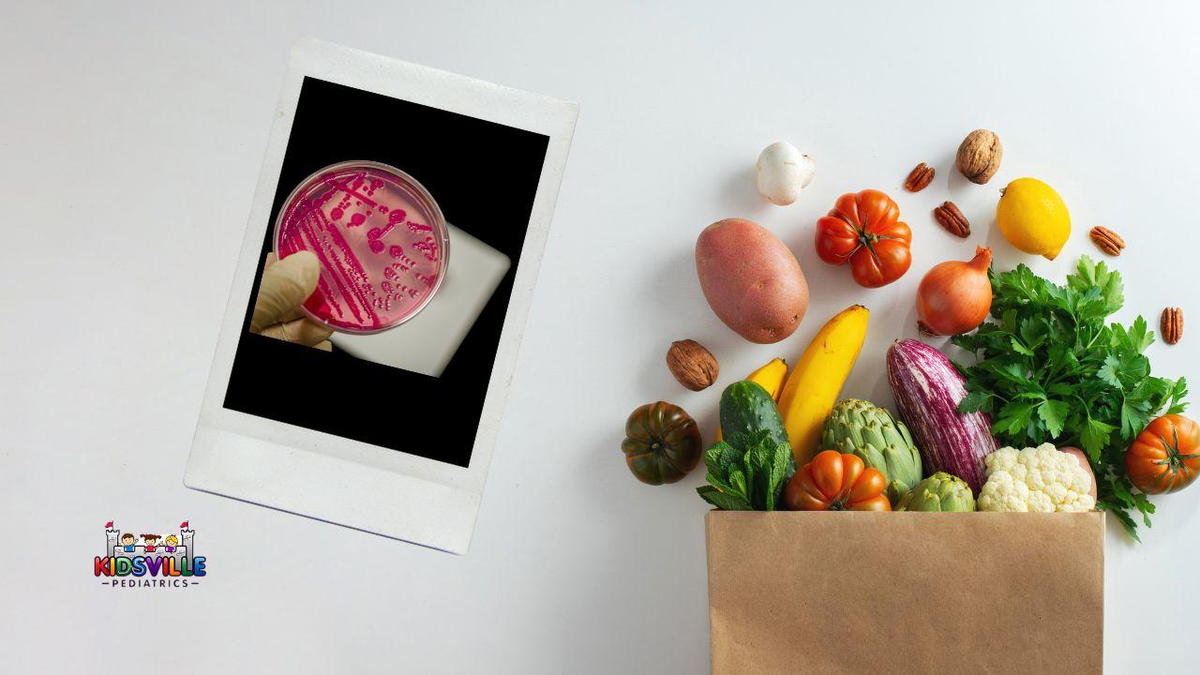
4. Salmonella in Leafy Greens and Fruits
Salmonella bacteria, a leading cause of foodborne illnesses, can contaminate raw fruits and vegetables, especially those grown in soil. This risk is heightened in environments where animals or birds have defecated on the fields. Notably, leafy vegetables are particularly susceptible due to their large surface areas.
A significant 8% of the 1,200 outbreaks caused by Salmonella bacteria in the United States between 1990 and 2015 involved leafy vegetables. Lettuce, one of the most consumed leafy vegetables worldwide, is frequently a carrier of Salmonella spp. and Escherichia coli O157.
A Brazilian meta-analysis of 1,296 articles found that the average prevalence of Salmonella spp. on lettuce was 0.041, with variations between regions and countries, ranging from 0.001 in Japan to 0.5 in Burkina Faso, West Africa. Another study in Canada found Salmonella in 0.29% of leafy herb samples.
Salmonella can survive on various vegetable surfaces, including cucumbers and tomatoes. A study in Spain demonstrated that Salmonella can persist in cucumbers even after artificial inoculation. The bacterial count on cucumbers decreased tenfold within the first two hours, increased over the next few hours, and returned to its initial count after 24 hours. Moreover, the bacteria showed higher resistance to low humidity on cucumbers than E. coli. Contaminated water used for irrigation or spraying can also lead to Salmonella colonization on tomatoes.
Research suggests that contaminated soil can lead to the contamination of plant tissues, including fruits. Salmonella cells can enter plants through natural openings such as stomata or hydathodes, and potentially through transport via the phloem from leaves.
Preventing Salmonella Contamination
Effective Salmonella control measures must start at the production stage and continue through to consumption. This involves robust surveillance, consumer education, and proper training for food handlers.
Agricultural Practices:
Implement Good Agricultural Practices (GAP) and Good Handling Practices (GHP) during harvesting.
Ensure personal hygiene, use of protective gloves, and disinfection of tools to prevent microbial contamination of horticultural products.
Food Handling:
Food handlers must follow strict hygiene rules to avoid spreading pathogens.
Avoid cross-contamination by using separate utensils and equipment for raw and cooked foods and washing hands thoroughly.
Restaurant Practices:
Restaurants are often linked to foodborne outbreaks, primarily due to poor food handling practices. Maintaining high standards of hygiene is crucial in food service industries to prevent contamination.
Government Regulations and Rapid Testing Methods
The EU adopts an integrated approach to control Salmonella, involving government agencies and stringent regulations requiring the absence of Salmonella in ready-to-eat foods. Similarly, rapid testing methods compliant with ISO 16140, such as the N-Light™ Salmonella Risk screening method, are highly effective in detecting potential contamination in food processing environments. This method is known for its sensitivity and speed, providing results within 24 hours.
Advice from the Best Pediatrician in McKinney TX
To safeguard your family's health, especially the children, the best pediatrician in McKinney TX, recommends adhering to the following:
Buy vegetables from reliable sources and wash them thoroughly before consumption.
Be cautious of raw vegetables that might be contaminated and ensure they are cooked or handled properly.
Educate family members, especially children, on the importance of hygiene and safe food handling practices.
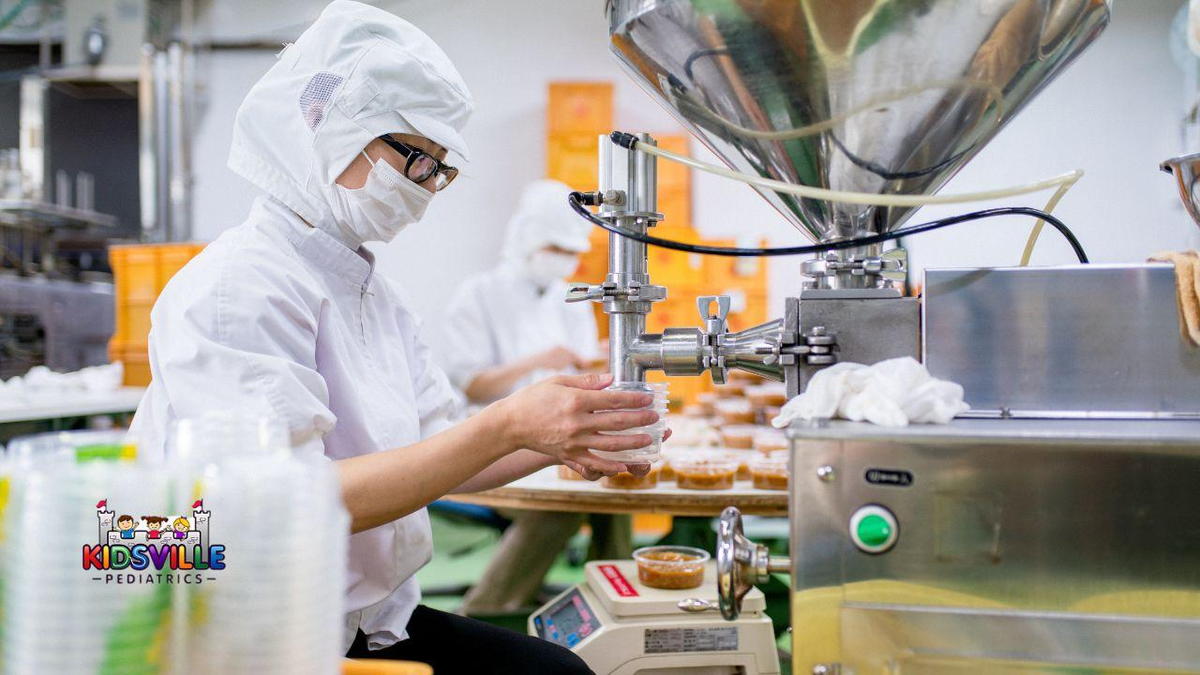
5. Salmonella in Processed Foods
The primary sources of Salmonella are contaminated food products, such as poultry, pork, and eggs. Poor hand hygiene and contact with infected pets also contribute to its spread. Understanding the sources of contamination in food production environments is crucial for preventing Salmonella spread.
Animal Species: Studies have identified nine primary sources: birds, biosolids-soil-compost, companion animals, horses, poultry, pigs, reptiles, ruminants, and wildlife. Migratory birds, for example, are significant reservoirs of Salmonella, especially in regions like Ukraine, where they nest during their journeys. Domestic animals, including pets like dogs, cats, and exotic animals, can also harbor Salmonella. In the UK, about 40% of households own pets, which can be potential sources of the bacteria.
Environmental Contamination: Salmonella can exist in an environment and be transmitted from any contaminated surface to food products. This transmission can occur in animal production facilities, food processing plants, and retail settings. The bacteria can penetrate plant surfaces through natural openings and physiological wounds, often without visible signs of spoilage, spreading the pathogen pre- or post-harvest. On farms, produce is vulnerable to contamination from wildlife, contaminated water, untreated manure, and poor hygiene practices by fieldworkers.
In the US, while outbreaks from raw eggs and seafood are decreasing, those from fruits and vegetables are rising. Despite low levels of pre-harvest Salmonella contamination, fruits and vegetables have been linked to numerous outbreaks, with tomatoes implicated in multiple multi-state incidents between 1990 and 2010.
Poor Sanitation and Hygiene Practices: Maintaining sanitation is critical in controlling Salmonella in food production environments. Insufficient cleaning and sanitizing of equipment and facilities can lead to persistent contamination. Food handlers must practice good hygiene, including frequent hand washing, to prevent the spread of Salmonella.
Cross-Contamination: Cross-contamination occurs when bacteria are transferred from one food product to another, such as when raw meat juices contact ready-to-eat foods. Proper temperature control is essential to prevent Salmonella growth in food products, which should be stored, transported, and cooked at appropriate temperatures.
Best Practices for Preventing Salmonella Contamination
McKinney pediatrics doctors recommend several best practices to prevent Salmonella contamination in food production environments:
Sanitation: Regularly clean and sanitize food production areas, equipment, and surfaces.
Hygiene: Ensure food handlers practice good hygiene, including frequent hand washing.
Temperature Control: Maintain proper temperature control during storage, transportation, and preparation.
Cross-Contamination Prevention: Keep raw meat, poultry, and eggs separate from ready-to-eat foods.
Use of Safe Water: Utilize clean and safe water in all food production processes.
Safe Animal Feed: Ensure animal feed is free of contaminants.
Proper Animal Housing: Avoid crowded conditions to reduce contamination risks.
Quality Control: Regularly monitor and test food products and environments.
Training and Education: Educate food handlers on safe practices and the importance of proper food handling.
HACCP Implementation: Implement Hazard Analysis and Critical Control Points programs to identify and prevent contamination sources.
Rapid Testing: Consistently monitor and assess food safety programs to reduce contamination risks.
By following these guidelines, we can significantly reduce the risk of Salmonella poisoning and protect public health.
Pediatrician Near Me
In conclusion, keeping your children safe from food-borne illnesses like salmonella is crucial, especially when it comes to their favorite foods. By understanding the risks associated with certain foods and practicing proper food safety measures, you can significantly reduce the likelihood of salmonella poisoning. Remember, the top five foods that can cause salmonella in kids include raw chicken and backyard poultry meats, unpasteurized milk and cheese, raw or uncooked eggs, leafy greens, and fruits, and processed foods.
With the insights provided by Kidsville Pediatrics McKinney, you can take proactive steps to safeguard your child's health. Ensuring thorough cooking, proper storage, and meticulous hygiene practices are essential to preventing salmonella contamination. Stay vigilant, stay informed, and keep your family safe from the hidden dangers in your kitchen. Together, we can create a healthier environment for our children.
You may schedule an appointment online: https://www.kidsvillepeds.com/appointment/
Or visit/call our clinics:
Kidsville Pediatrics Mansfield TX: 682-341-3910; 1759 Broad Park Circle S, Suite 201 & 205, Mansfield, TX
Kidsville Pediatrics Southlake: 682-345-8010; 2813 W. Southlake Blvd Suite 100 Southlake, TX
Kidsville Pediatrics McKinney: 469-885-9400; 5881 Virginia Pkwy. Suite 300 Mckinney, TX
